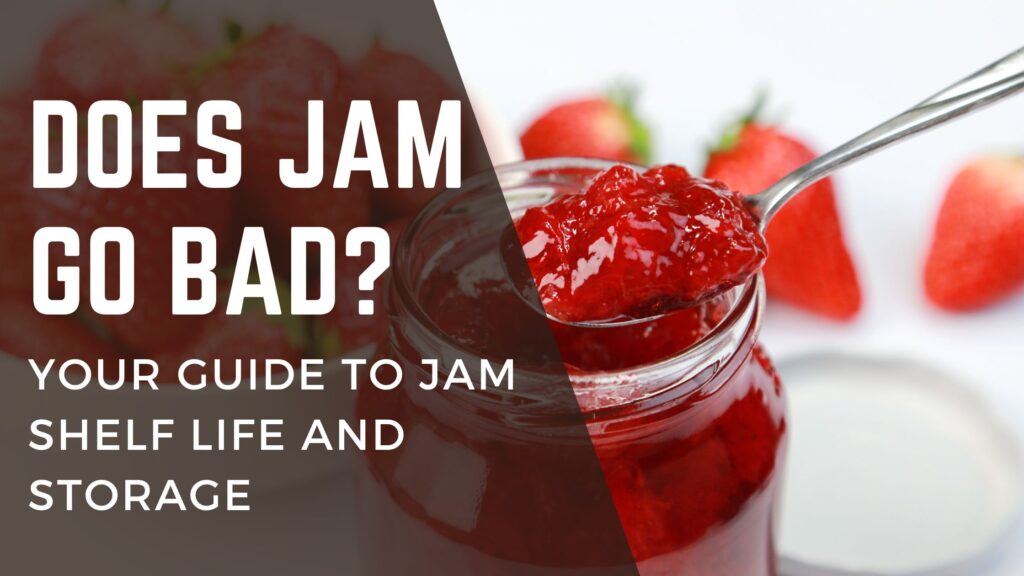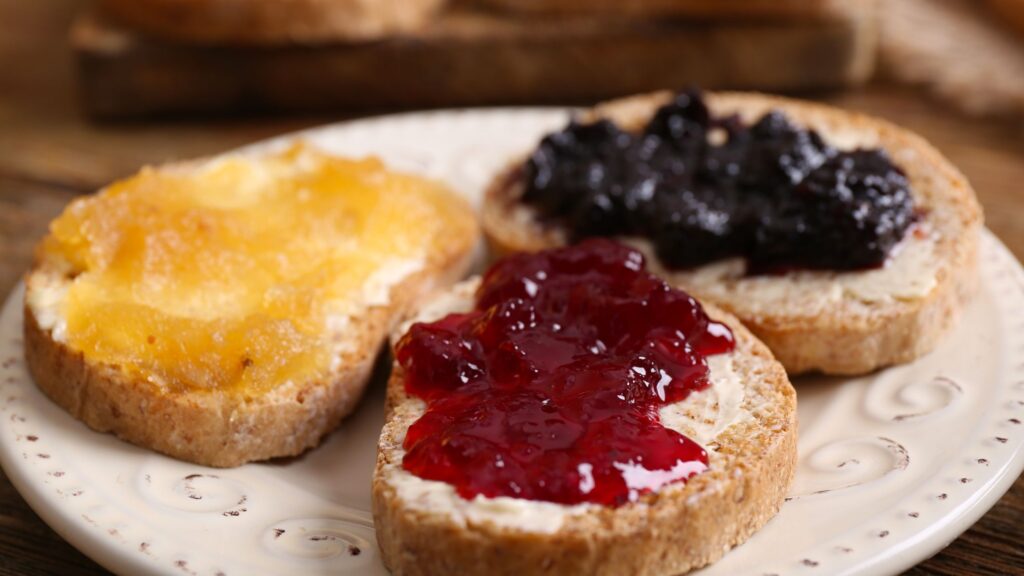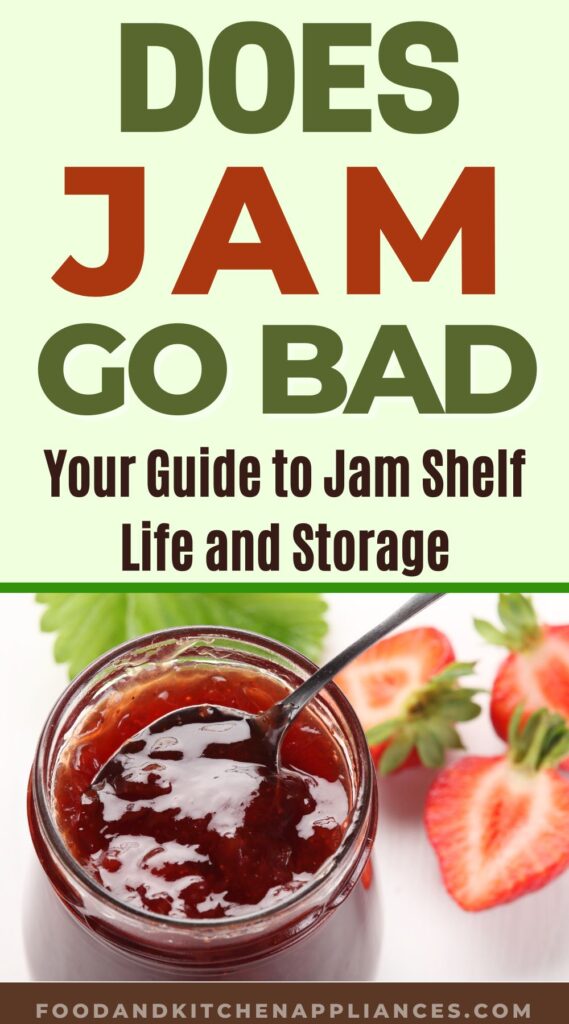Jam is a popular spread for toast, biscuits, and other baked goods. Many people wonder if jam can go bad and, if so, how long it can be safely consumed.
The answer to this question depends on several factors, including the type of jam, the storage conditions, and the presence of any additives or preservatives.
In general, jam can last for a long time if it is stored properly. Most commercially produced jams contain preservatives that help to extend their shelf life. However, homemade jams may not contain preservatives and may spoil more quickly. Additionally, the storage conditions can affect the longevity of the jam.

Jars should be stored in a cool, dry place away from direct sunlight. Once opened, the jam should be refrigerated and consumed within a few weeks.
Does jam go bad?
Jam is a sweet and delicious spread that can be enjoyed on toast, biscuits, or even as a topping for ice cream. However, like any other food, jam can go bad over time.
How long does it take for the jam to go bad, and what are the signs that it has gone bad?
The shelf life of jam depends on several factors, including the type of fruit used, the sugar content, and the storage conditions. Generally, unopened jam can last for up to two years when stored in a cool, dry place away from direct sunlight.
Once opened, the jam should be refrigerated and consumed within one to six months, depending on the type.
One of the most common signs that it has gone bad is mold growth. If you notice any mold on the surface, discard it immediately. Additionally, if the jam has an off smell or taste, it may have gone bad and should be thrown away.
It is important to note that sugar acts as a preservative in jam, which means that high-sugar jams tend to last longer than low-sugar jams. However, even high-sugar jams can go bad if they are not stored properly or are past their expiration date.
How to Tell if Jam Has Gone Bad
Visual Indicators
One of the easiest ways to tell if it has gone wrong is to look for visual indicators. If the jam has grown mold or has changed color significantly, then it is likely that it has gone bad. If it appears watery or has separated, it may have spoiled, and it is best to discard it.
Smell Test
Another way to determine if the quality is to use your sense of smell. If it has a sour or off odor, then it has likely gone bad. If you feel that the smell is normal it may still be safe to consume.
Taste Test
The most reliable way to tell if it has gone bad is to taste it. If it tastes sour, bitter, or off, then it has likely spoiled, and it is best to throw it away. If the taste is normal, it may still be safe to eat.
It is important to note that even if the it passes the visual, smell, and taste tests, it may still be unsafe to eat if it has been stored improperly or for too long.
Always check the jar’s expiration date and storage instructions before consuming.

What Happens If You Eat Expired Jam?
Eating expired jam is not recommended as it can lead to various health problems. The longer it sits on the shelf, the more likely it is to spoil. Here are some potential risks of consuming expired food:
- Food Poisoning: Eating expired jam can increase the risk of food poisoning. Spoiled food can contain bacteria such as Clostridium botulinum, which can lead to botulism, a severe form of food poisoning.
- Mold Exposure: Expired jam can develop mold, which can cause allergic reactions and respiratory problems in some individuals. Mold can also produce mycotoxins, which are toxic substances that can be harmful to human health.
- Loss of Nutritional Value: Over time, the nutritional value can decrease, and it may lose its flavor and texture. Eating expired jam may not provide the same nutritional benefits as fresh ones.
It is best to discard if it has expired or shows signs of spoilage, such as mold or an off smell. It is better to be safe than sorry when it comes to consuming expired food.
Factors Influencing Jam’s Shelf Life
Ingredients
The type and quality of ingredients used in making jam can affect its shelf life. Jams made with high-quality, fresh fruits and natural sweeteners tend to last longer than those made with lower-quality ingredients or artificial sweeteners.
Additionally, using preservatives such as citric acid or pectin can extend the shelf life of any food product.
Preservation Methods
The preservation method used during the jam-making process can also impact its shelf life.
Jams that are canned or sealed using a water bath can last for up to a year or more, while those that are refrigerated or stored in a jar at room temperature may only last for a few weeks.
Storage Conditions
Proper storage conditions are crucial for maximizing the shelf life. Jars of jam should be stored in a cool, dry place away from direct sunlight.
Exposure to heat or light can cause the jam to spoil more quickly. Additionally, once a jar of jam has been opened, it should be refrigerated and consumed within a few weeks.
Tips to Extend Jam’s Shelf Life
Proper Storage
Proper storage is essential to extend the shelf life of jams and jellies. Store unopened jam jars in a cool and dry place, away from direct sunlight, to prevent spoilage. Once opened, store the container in the refrigerator.
Use Clean Utensils
Always use clean utensils to avoid contamination. Please do not use the same spoon to scoop out and put it back into the jar. This can introduce bacteria into the jar and cause spoilage.
Refrigerate After Opening
After opening, it is essential to refrigerate the jam to prevent it from spoiling. Ensure to tightly seal the jar after each use to prevent air from entering and causing mold growth.
By following these simple tips, you can extend the shelf life of your jam and enjoy it for longer. Remember to always check for signs of spoilage, such as mold or an off smell, before consuming.

Frequently Asked Questions
How long does opened jam last unrefrigerated?
Once opened, the jar should not be left unrefrigerated for more than a day or two. If the jam has been left out for longer, it may develop mold or spoilage bacteria. Always store opened jars in the refrigerator to keep it fresh for extended periods.
How long does the jam last unopened?
Unopened jam can last for up to two years if stored in a cool, dry place away from direct sunlight. The best way to determine if the unopened one is still good to eat is to check for any signs of mold or spoilage before consuming it.
How long does Bonne Maman jams last after opening?
Bonne Maman jellies and jams can last for up to a month after opening if stored in the refrigerator. Seal the lid tightly after each use to prevent air from getting in and causing spoilage.
How long does homemade jam last unopened?
Homemade jam can last for up to a year if stored in a cool, dry place away from direct sunlight. However, homemade jams and jellies do not contain preservatives like store-bought ones and may spoil more quickly if not stored properly.
How long can jam last in the fridge?
Jam can last for up to six months in the refrigerator if stored properly. It is essential to ensure the jar is tightly sealed after each use and to keep it away from any sources of heat or moisture that can cause spoilage.
Is natural and artificial vanilla extract gluten-free?